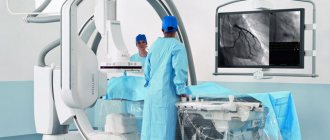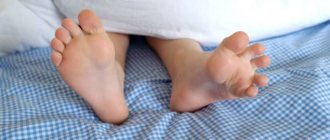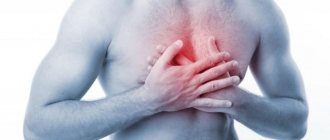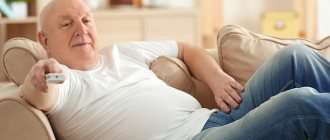It is generally accepted that joint diseases most often occur after injuries. In athletes, arthrosis is caused by frequent overloads; in overweight people, it is caused by heavy weight. Treatment of osteoarthritis may be necessary for diabetes and osteoporosis, against the background of hormonal changes or unfavorable heredity. All this is true, if not for one “but”.
Recent discoveries by scientists indicate that one of the main causes of degenerative changes in joints is psychogenic in nature. We are talking about chronic stress in which the patient lives. Why does this happen and can it be avoided?
Do you live in constant stress? Expect joint problems
The mechanism of arthrosis development due to stress
With prolonged experiences in the human body, the level of corticosteroid hormones increases. Biochemists are convinced that their excess stops the production of hyaluronic acid, an important component of synovial fluid, or joint lubrication. Gradually, dehydration and drying out of the cartilage occurs, which becomes thinner and cracks - arthrosis is evident!
A large amount of stress hormones worsens the permeability of capillaries, and with it the blood flow in damaged vessels. If, against such a hormonal background, trauma or microtrauma to the joint occurs, this accelerates the deformation of the cartilage.
Start thinking positively, get rid of chronic stress - it will be easier to cope with arthrosis!
The main causes of femoral neuritis:
- Poisoning with certain substances.
- Diabetes mellitus is a disease that leads to disruption of blood flow in small vessels, as a result of which the nutrition of the nerve is disrupted and an inflammatory process develops in it.
- Vasculitis is an inflammatory process in blood vessels.
- Violation of the ratio of various proteins in the blood serum (dysproteinemia).
- Impairment of blood flow to the nerve as a result of compression.
- Tunnel syndrome is a condition in which a nerve is compressed in a canal formed by bone and ligaments. There are characteristic places where compression of the femoral nerve can occur with subsequent development of neuritis, for example, under the inguinal ligament.
Which negative emotions are especially harmful to joints?
Medicine does not give an exact answer to this question. The information presented below is the result of individual studies and can be excellent food for thought for those who are concerned about their health.
- Coxarthrosis
Scientists have noticed that treatment for arthrosis of the hip joint is usually required by people who are pleasant in communication, not prone to conflicts, restrained and calm. Irritation, anxiety, and suppressed anger provoke the release of corticosteroids into the blood, which interfere with the production of synovial fluid. Internal tension in the nervous system causes spasms and hypertonicity of the skeletal muscles, especially strong in the hip area, which strongly “pinches” the damaged joint. This accelerates its deformation.
In Western countries, where it is customary to smile to hide your weaknesses, the percentage of people with coxarthrosis is constantly growing. After all, suppressing emotions often leads to a severe depressive-stressful state.
Coxarthrosis often affects reserved, non-conflict people who tend to suppress their emotions
- Gonarthrosis
Knee arthrosis occurs, according to researchers, as a result of severe stress or difficult experiences. This happens, for example, after a divorce, dismissal from work, loss of loved ones or other difficult stages in life.
Gonarthrosis is diagnosed in people who are emotionally tired, who instead of interest in life have fatigue accumulated over the years. This category includes, for example, women “50+” who are forced to work, manage the household and deny themselves everything. Even when they do not yet need treatment for osteoarthritis, since their knees are still healthy, they still walk with difficulty, as if “with weights on their legs.”
How to become energetic and cheerful again? How to regain your vital energy? We present 10 ways to get rid of lethargy, laziness and apathy, and therefore give a worthy rebuff to arthrosis:
A person without vital energy stoops, his legs swell, blood circulation in them is disrupted - vascular thrombosis or varicose veins occurs. The knee joints gradually lose flexibility, and the cartilage in them loses moisture (due to the lack of normal blood supply). The cartilage tissue dries out and cracks - arthrosis begins.
Gonarthrosis in men develops against the background of hyper-responsibility. However, since representatives of the stronger sex more often allow themselves “little joys,” they face the problem of treating severe arthrosis less often than women. In turn, it has been noted that the final stages of this disease are observed mainly in intelligent but critical people prone to chronic dissatisfaction.
Osteoarthritis of the knee often develops against the background of emotional fatigue or hyperresponsibility
Causes of psychogenic back pain and how to treat them
Spread of pain throughout the back - this condition of the patient is called psychogenic pain. It is impossible to escape from it with ordinary painkillers. But even an MRI examination does not determine the source of this condition.
When your back hurts
, it is difficult to determine the causes of this condition. Rarely are they physical. Most often, pain occurs “from nerves.” That is, spinal diseases are associated with psychosomatics. The trigger mechanism for this disease is human problems of a psychological nature. Such diseases require a special approach to diagnosis and treatment.
Symptoms
Symptoms that can help identify nerve pain:
- the tailbone or the whole leg hurts;
- legs go numb, they seem to give way;
- even a light touch or pressure causes pain, which sometimes spreads from the back of the head to the tailbone;
- no improvement for a long time, even with constant treatment the pain does not go away;
- requirement to be hospitalized “by ambulance”, but the painful area is not clearly indicated;
- inadequate reaction of the patient to any doctor’s manipulations, even painless ones;
- manipulating others using your condition.
When severe pain occurs repeatedly, “pain behavior” occurs. In ordinary life, such people try to move with the help of sticks, crutches, and walkers for adults. Most of the time is spent in bed. They always need help, even to perform ordinary activities: putting on shoes, dressing and hygiene procedures.
Briefly about the physiology of the process
The medical field, which is called psychosomatics, is on the border of physiology and psychology. It studies the occurrence of diseases under the influence of general psychological causes. If after all examinations no changes in the body are detected, the disease is recognized as a psychosomatic disorder. And the symptoms are only a consequence of certain psychological conditions:
- stress;
- tension;
- conflict;
- anger, resentment, etc.
Louise Hay spoke about the fact that the psyche is connected with physiology. In his most famous book, You Can Heal Your Life, the American psychologist seeks to show people that strong experiences destroy health. A person can heal himself by changing his thoughts.
Psychologist Leslie Krohn identified the following sources of psychosomatic illnesses:
- Language of the body. When a person expresses pain in specific words, a certain part of the body becomes ill.
- Conflict. Disagreements occur between two parts of the personality.
- Conditional benefit. A person with his illness attracts the attention of others.
- Self-identification. There is an identification of oneself with another person who has a similar disease. Often this is the result of emotional dependence.
- Past experience. The cause of the disease is an unfavorable situation that occurred in childhood.
- Suggestion. People, succumbing to the influence of others, discover diseases that do not exist in themselves.
- Self-punishment. A person considers himself guilty, and considers his illness to be a punishment for his sin.
Diagnostics
Psychosomatic diseases are difficult to diagnose. First, it is necessary to exclude any pathologies of the body.
There are no somatologists in our country, so a psychiatrist deals with such patients.
The following methods are used for diagnosis:
- Conversation with the patient. A psychiatrist identifies hereditary mental illnesses. Clarifies traumatic situations. After all, problems often stretch back to childhood.
- Survey tasks. Using this method, the patient’s emotionality and predisposition to depression are revealed.
- Projective drawing test, “unfinished sentences”, Luscher test - they are used to diagnose children.
Treatment
It is necessary to treat back diseases associated with psychosomatics comprehensively, combining psychotherapy with pharmacotherapy.
- Psychotherapy. It is performed on an outpatient basis, but complex cases have to be dealt with in a hospital. The task of a psychotherapist is to reduce the level of anxiety and help the patient understand his problem. The unconscious will become conscious if the patient can, with the help of a specialist, overcome the conflict between mind and body, remove the “clamps” that prevent one from truly feeling and experiencing.
Specialists conduct classes in groups or individually. The use of Gestalt therapy, psychoanalysis, and hypnosis gives positive results.
- Pharmacotherapy. The choice of medications depends on the clinical diagnosis. There are many effective traditional medicine recipes, dietary supplements, and aromatherapy. They are recommended to be used as additional means.
For serious psychosomatic disorders, the use of psychotropic drugs is suggested.
Prevention
In many cases, psychosomatic diseases are acquired in early childhood. Parents do not pay due attention to the fact that the child often complains of headaches, rapid fatigue, and poor sleep. All this turns into a serious problem in adult life.
Particular attention should be paid to adolescents. In case of deviant behavior, its correction is required. It is necessary to play sports, attend clubs, and communicate in children's groups. Everything matters. It is necessary to increase the child’s self-esteem, approve of successes, and provide support in difficult moments.
Prevention of any spinal disease
consists of a proper daily routine, proper sleep, rest, and from time to time you should change the environment.
If a person learns to build personal relationships, deal with stress without suppressing, and experience negative emotions, he will under no circumstances encounter the problem of psychosomatic diseases.
Author: K.M.N., Academician of the Russian Academy of Medical Sciences M.A. Bobyr
The following emotions are especially dangerous:
- internal irritation;
- chronic resentment towards others, loved ones or the whole world;
- discontent.
When a person feels these emotions, he experiences a spasm of the anterior thigh, which accompanies gonarthrosis in 100% of cases. At first, the spasm does not make itself felt, but then it “tightens” the knees and prevents their free movement. As a result, either a rupture of the meniscus or deformation of the cartilage occurs.
Knees often bother people who are prone to criticism, self-criticism and dissatisfaction.
How important is psychological attitude in the treatment of arthrosis?
Practice shows that those who can restructure their thinking in a positive way succeed in treating arthrosis. Negative emotions increase the production of stress hormones, while positive ones, on the contrary, help activate the body's defenses.
The effect of any treatment largely depends on the patient’s mood. It is not surprising that even the highly effective intra-articular injections Noltrex have different effects on people with an identical diagnosis. For one person, two injections are enough to completely restore mobility and get rid of pain, while another needs 4-5 injections.
The disease recedes before the patient’s optimistic mood
Today, the theory about the connection between arthrosis and stress has not yet been scientifically substantiated, but scientists have every reason to believe that this factor is of great importance not only in the development of the disease, but also in its treatment. Learn to think positively, look for positive moments in life, say “no” to dissatisfaction, criticism and other negative emotions - you will be surprised by the results!









